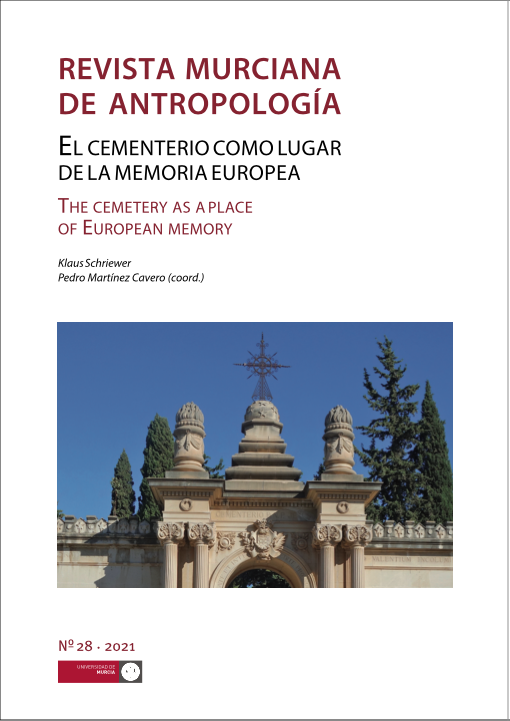The preservation of the funerary traditions of a religious minority: Jewish cemeteries in Europe
Abstract
This article gives a brief outline of the development of Jewish cemeteries in Europe since antiquity up to today. It focuses less on gravestones than on the positioning, layout and later design of these burial places. Jewish cemeteries reflect the ever changing situation of a religious and social minority within a sometimes tolerant, but mostly intolerant environment. It’s a history of separation and integration, of retaining tradition or assimilation. O two millennia a core of Jewish belief in afterlife and coping with death and burial was kept. Their upkeep is a gigantic task, as these ‘Houses of Life’ are a testimony to a minority of early Europeans, who connected the continent following the collapse of the civilisation of antiquity.
Downloads
-
Abstract514
-
pdf (Español (España))667
-
pdf667
References
(1901-1906). Jewish Encyclopedia, vol. III. New York-London.
Gleize, Y., Mendisco, F., Pemonge, M. H., Hubert, C., Groppi, A., Houix, B., Degui-Lloux, M. F. & Breuil, J. Y. (2016). Early Medieval Muslim Graves in France: First Archaeological, Anthropological and Palaeogenomic Evidence. PLoS one 11 (2). https://doi.org/10.1371/journal.pone.0148583.
Goldberg, S. A. (1996). Crossing the Jabbok. Berkeley-Los Angeles-London.
Jacobs, J. G. (2009). Houses of Life. Jewish Cemeteries of Europe. London.
Künzl, H. (1999). Jüdische Grabkunst. Von der Antike bis heute. Darmstadt.
Mahmoud, M. (2020). Spain finds Cemetery of Andalusia Backed To 1,300 Years Ago. Leaders. Culture & Art. November 19. https://www.leaders-mena.com/?s=Tauste.
Copyright (c) 2021 Murcian Journal of Anthropology

This work is licensed under a Creative Commons Attribution-ShareAlike 4.0 International License.
Las obras que se publican en esta revista están sujetas a los siguientes términos:
1. El Servicio de Publicaciones de la Universidad de Murcia (la editorial) conserva los derechos patrimoniales (copyright) de las obras publicadas, y favorece y permite la reutilización de las mismas bajo la licencia de uso indicada en el punto 2.
2. Las obras se publican en la edición electrónica de la revista bajo una licencia Creative Commons Reconocimiento-CompartirIgual 4.0 Internacional. Se pueden copiar, usar, difundir, transmitir y exponer públicamente, siempre que: i) se cite la autoría y la fuente original de su publicación (revista, editorial y URL de la obra); ii) se mencione la existencia y especificaciones de esta licencia de uso.
3. Condiciones de auto-archivo. Se permite y se anima a los autores a difundir electrónicamente las versiones pre-print (versión antes de ser evaluada) y/o post-print (versión evaluada y aceptada para su publicación) de sus obras antes de su publicación, ya que favorece su circulación y difusión más temprana y con ello un posible aumento en su citación y alcance entre la comunidad académica. Color RoMEO: verde.













